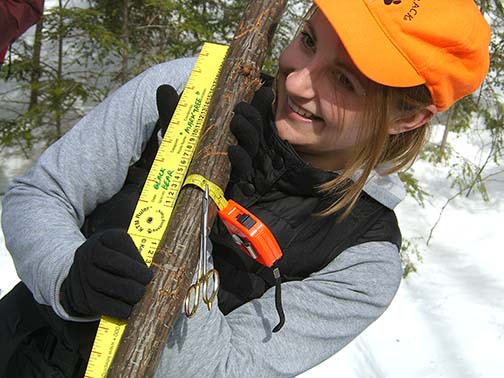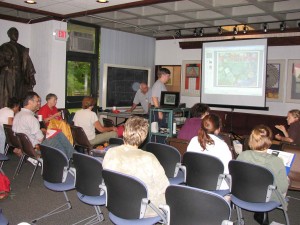What is the Berkshire Wildlife Trackers Monitoring Program?
How are BWT wildlife monitors trained?
What’s happening now at Berkshire Wildlife Trackers?
Becoming Part Of The Berkshire Wildlife Tracker Team
Apply to become a wildlife monitor with Berkshire Wildlife Trackers.
What is the Berkshire Wildlife Trackers Monitoring Program?
Berkshire Wildlife Trackers (BWT) is hosted by Berkshire Environmental Action Team (BEAT) and Berkshire Natural Resource Council (BNRC). This group of volunteers has been trained to read the woods and other natural habitats for tracks and signs of wildlife. These trained wildlife monitors go out in small teams to collect data that tells a story of how wildlife species use the natural areas of Berkshire County and the surrounding areas. The team maintains a database of the information collected and shares this data with scientists, educators, government agencies, and environmental organizations to help protect wildlife species and important wildlife habitat and linkages in the region.
How Are Berkshire Keeping Track Wildlife Monitors Trained?
BEAT and BNRC contract with Keeping Track® to provide an exciting and intensive training for the trackers. The training includes two days in the classroom and six full-day training workshops in the field. Most of the training is done on weekends, and the training is spread out over a year so that trainees have tracking experience in all seasons.
The training sessions are run by nationally recognized naturalist, habitat identification specialist, and photographer Sue Morse of Keeping Track®, who trains trackers in the use of a scientifically-based data collection methodology so that they can document their field observations using a protocol that is useful to environmental scientists and others who regularly use this type of data.
Training includes: detection and interpretation of tracks and signs of agreed upon focal species for the Berkshires, conservation biology and how it relates to data collection and land protection, forest ecology and plant identification and what it tells us about how Berkshire species use local habitat, ‘search imaging’ (Sue Morse’s technique for predictably looking in the right places and finding wildlife signs), and an introduction to science-based field studies.
Our next class began in October 2013, but there is still room. Interested in joining the class? See our sign up page.
What’s Happening Now At Berkshire Wilderness Trackers?
Berkshire Wildlife Trackers is now looking to form a fourth group of 18 to 20 volunteers who would like to go through the Keeping Track training program. Interested in joining the class? See our sign up page.
Becoming Part Of The Berkshire Wildlife Trackers Team
Our fourth group of monitors still has space. Would you like to take action to ensure that wildlife always has a place in and around the Berkshires? If so, please consider joining the program. See our sign up page.
If you would like to be trained to be a Berkshire Wildlife Tracker, here are a few things to consider:
- To complete the training you must be able to be outside in the cold and snow all day.
- You must be able to hike up and down uneven terrain. (The group moves very slowly, looking at track and sign, so the pace is not strenuous.)
- You will be asked to commit to approximately one day per month for training, and about the same for monitoring during the year. Training is on weekends. Schedule: 2013-2014.
- You will be asked to pay part of the cost of training. The cost to BEAT of training a wildlife monitor is about $1,200. Trainees are asked to pay $450 of this cost, plus the cost of staying overnight in Vermont for three of the trainings. If you are enthusiastic about the prospect of a local wildlife monitoring group and willing to make the commitment to training, please contact the Berkshire Wildlife Trackers’ training coordinator.
Have questions? – Please, first take a look at the Keeping Track® website for more information about the training.
Still interested? – Then please contact the BWT coordinator.



Leave a Reply